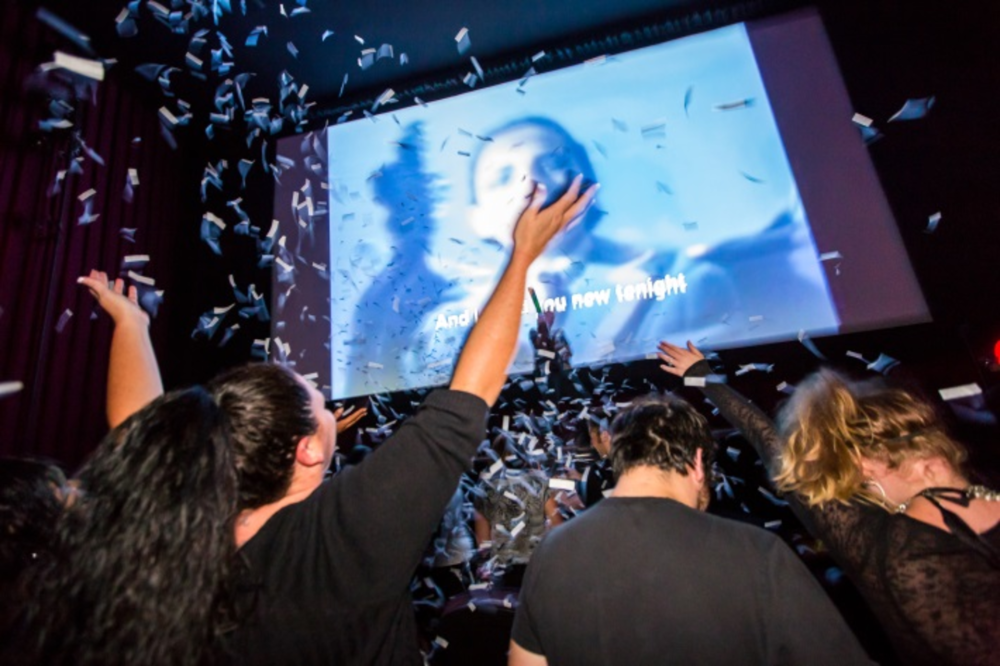For some movie-goers, the film itself is only one piece of a bigger experience. Executives at Alamo Drafthouse Cinemas understand this and built their business around interacting with those customers. In fact, the founders launched the theater chain in 1997 in Austin with the goal of providing more than dinner and a movie. Instead they opted for delivering unique, immersive experiences for customers that extend beyond the big screen.
“When you come to the Alamo Drafthouse… we immerse people in the movie with things like ’80s sing-a-longs, celebrity guest appearances, and interactive quote-a-longs,” says Casey Warnick, social media director for Alamo Drafthouse, a dinner-and-movie chain. The theater differentiates itself with events (such as silent movies scored by local, live bands that play accompaniment) and showing food-themed films, such as Like Water for Chocolate, served with meals matching the foods in the films.
“All these things actually immerse our audience and enable us to interact with them. But we wanted to make sure that we’re transferring that [immersive experience] online and to social,” Warnick adds. “We realized that the way to do that was through brand voice. That was the main part of our strategy.”
That strategy included identifying and then interacting with the company’s target audience on social media, which Warnick says mirrors the company’s in-theater audience. The plan also included extending Alamo Drafthouse’s brand voice online to appeal to that same film-loving audience and, of course, to benefit the brand.
Accomplishing this required analytic skills and tools that the company simply didn’t have. Warnick says that marketers at Alamo Drafthouse didn’t know how to measure the effectiveness of, collect analytics and insights on, or manage the growing needs that come with a budding social media presence.
“We didn’t have robust enough analytics to grow our social media efforts—and certainly not enough to learn from them or improve them,” Warnick says. “We needed a lot more than just a simple number of likes and comments.”
The solution, she says, was to find technology that could support the marketing team’s efforts and fill in some of the analytic skills gaps. So with tools from Sprinklr, Alamo Drafthouse’s marketing team began to monitor and drill into social conversations and pull deeper insights, such as whether social media users are writing unique messages to the company or whether the comments are positive.
That enabled the movie theater chain’s marketers to achieve its original goal to make a deeper connection with film fans on social networks. Warnick says its target customers are people who do more than leisurely watch the latest movies, but are “passionate about film and who understand film.” For a fan that means enjoying insider conversations, recommendations from respected movie connoisseurs, and short vignettes that only film zealots would understand and appreciate. By combing through social content, marketers at Alamo Drafthouse began to identify—and then target—that same big screen audience on social.
So with a sharper understanding of its social audience, Alamo Drafthouse’s marketers managed to bring its brand voice to Facebook, Twitter, and other platforms in ways that best suit its audiences on each social platform. “Our voice is fun, witty, honest, deeply informed, and ideally engaging,” Warnick says. So, the company’s marketers share specific, in-depth recommendations and jokes based on movies they’re promoting that only an avid fan would likely get. “We make sure we’re not overly promotional and our brand voice is in every piece of material that we produce and share,” she adds.
The result, Warnick says, has been huge growth in social media followers and interactions—plus, a better way to manage all of Alamo Drafthouse’s social audiences. “Four years ago, we weren’t even reporting [or collecting] anything from social media. So, I couldn’t even tell you how many followers we had back then. Today we have more than one million,” she says.
Monitoring, collecting, and optimizing social insights, Warnick says, has enabled her team to communicate better—with each other and with followers. “We have a consistency of brand voice now, and it takes so much off of the local team members,” she says. “We have beautiful timing [in each market] and brand consistency.”
Now that Warnick’s team creates content its target consumers enjoy—content that prompts engagement on social—they’re able to do more than boost ticket sales. “We’re seeing more positive results, engagement, interactions, and trends on social media—all in real time,” she says. “It’s a big win.”








